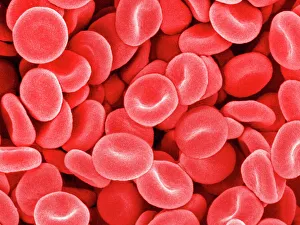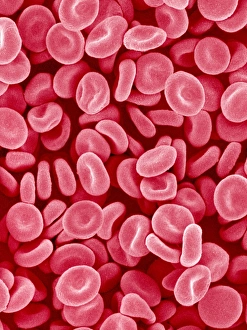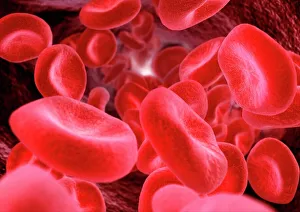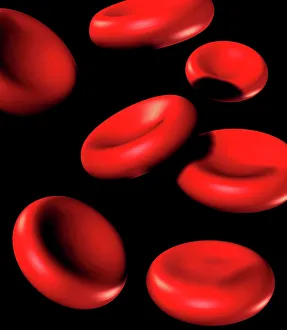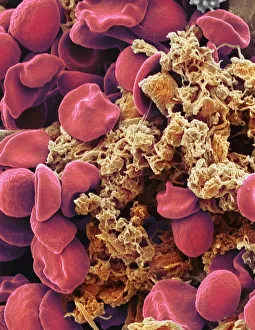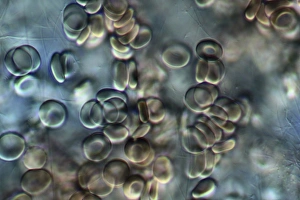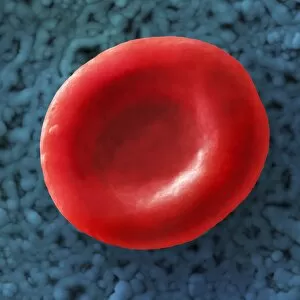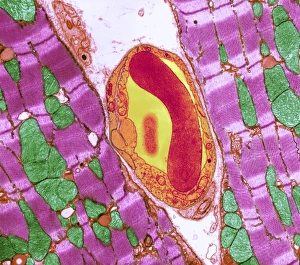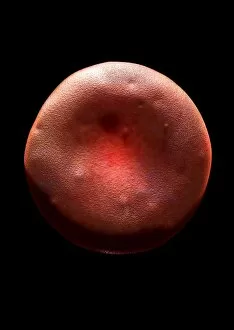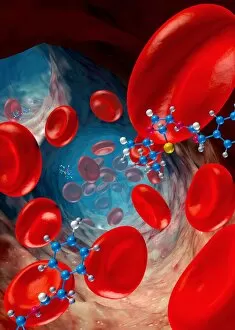"Biconcave: Unveiling the Intricate World of Red Blood Cells" Step into the microscopic realm and witness the mesmerizing beauty red blood cells through various imaging techniques. In this captivating journey, we explore their unique structure and vital role in our circulatory system. Using Scanning Electron Microscopy (SEM), we delve deep into the intricate details of these remarkable cells. The high-resolution images reveal their distinctive biconcave shape, resembling a flattened disc with concave surfaces on both sides. This specialized morphology allows for increased surface area, facilitating efficient oxygen and carbon dioxide exchange within our bodies. Through computer artwork, we are transported to a virtual world where vibrant red blood cells come alive. Their dynamic nature is showcased as they navigate through narrow capillaries, delivering life-sustaining oxygen to every tissue and organ. In another SEM image, red blood cells harmoniously coexist with platelets - crucial components responsible for clotting - emphasizing their collaborative effort in maintaining our overall health. The magnificence continues as SEM captures an array of different blood cell types. Each one possesses its own distinct characteristics that contribute to our well-being. From white blood cells defending against infections to platelets preventing excessive bleeding, this diverse community showcases the complexity of our bloodstream. A light micrograph provides a closer look at individual red blood cells under C016 / 3035 staining technique. The vivid hues highlight their cellular structures and reinforce their essential function in transporting oxygen throughout our body's tissues. Returning to SEM imagery once more, we zoom in on a single red blood cell suspended in isolation. Its delicate membrane texture becomes apparent as it stands as a testament to the intricacy hidden within even the smallest units of life. Expanding beyond just red blood cells, Transmission Electron Microscopy (TEM) reveals an awe-inspiring sight – cardiac muscle fibers intertwined with tiny capillaries that nourish them. This intricate network ensures the continuous pumping of our heart, sustaining life itself.

